Rear
Rear Brake Pad Inspection and ReplacementReplacement
1. Raise the rear of the vehicle, and support it with safety stands in the proper locations. Remove the rear wheels.
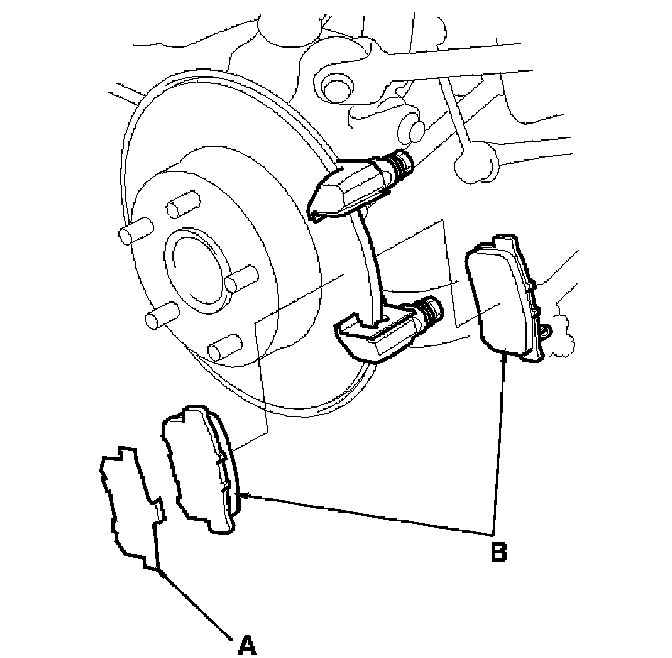
2. Remove the flange bolts (A) while holding the pin (B) with a wrench being careful not to damage the pin boot, and remove the caliper (C). Check the hose and pin boots for damage and deterioration.
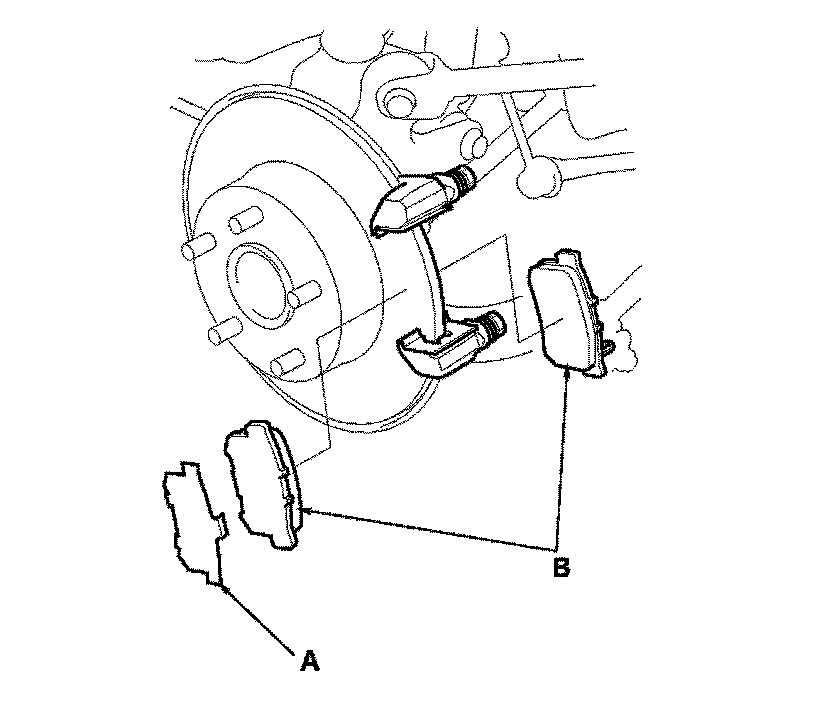
3. Remove the pad shim (A) and pads (B).
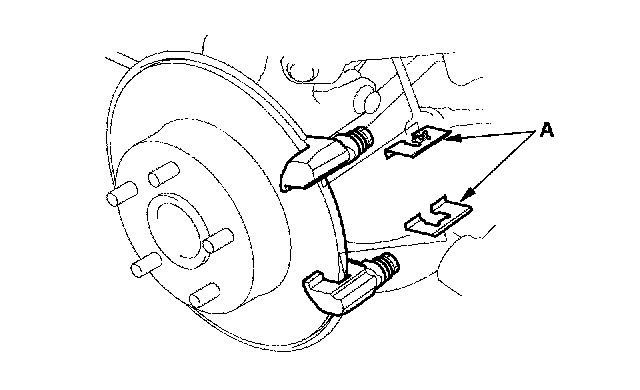
4. Remove the pad retainers (A).
5. Clean the caliper thoroughly; remove any rust, and check for grooves and cracks.
6. Check the brake disc for damage cracks.
7. Clean and install the pad retainers.
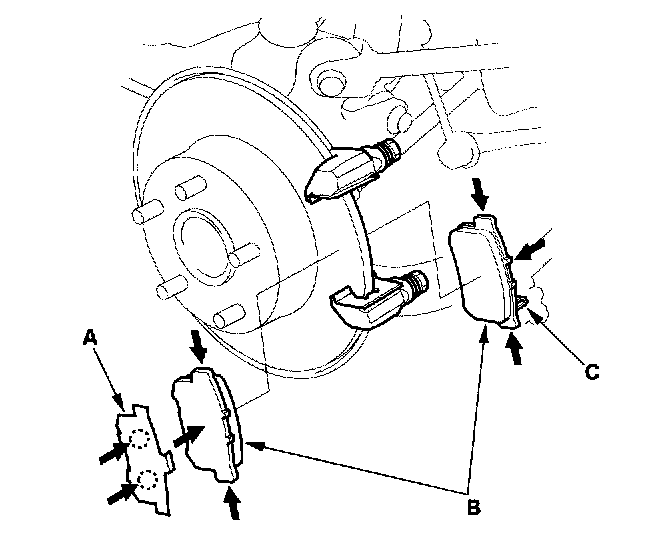
8. Apply Molykote M77 grease (P/N 08798-9010) to both sides of the shim (A), the back of pads (B), and the other areas indicated by the arrows. Wipe excess grease off the shims and pads. Contaminated brake discs or pads reduce stopping ability. Keep grease off the brake discs and pads.
9. Install the brake pads and pad shims correctly. Install the pad with the wear indicator (C) on the inside.
If you are reusing the pads, always reinstall the brake pads in their original positions to prevent a momentary loss of braking efficiency.
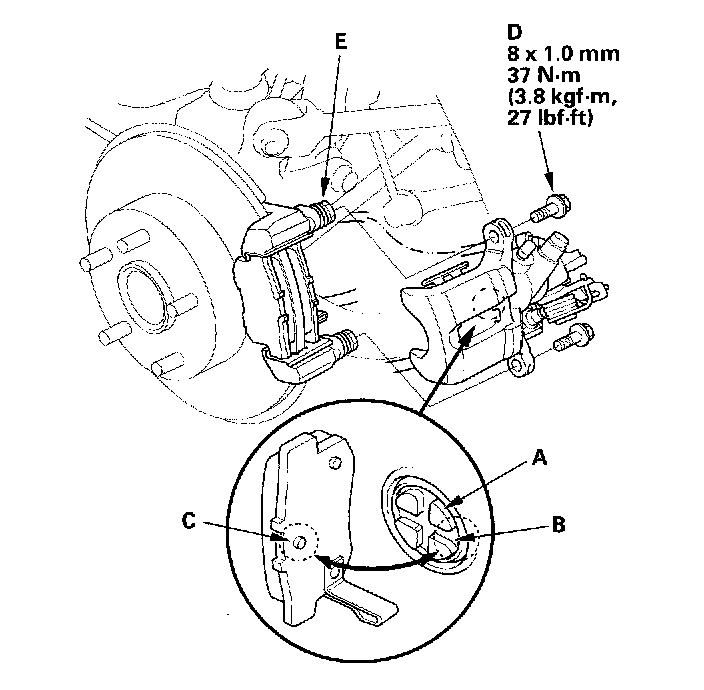
10. Rotate the caliper piston (A) clockwise into the cylinder, then align the cutout (B) in the piston with the tab (C) on the inner pad by turning the piston back. Lubricate the boot with rubber grease to avoid twisting the piston boot. If the piston boot is twisted, back it out so it is positioned properly.
11. Install the caliper. Install the flange bolts (D), and tighten it to the specified torque while holding the pin (E) with a wrench. Be careful not to damage the pin boot.
12. Press the brake pedal several times to make sure the brakes work, then test-drive the vehicle.
NOTE: Engagement of the brake may require a greater pedal stroke immediately after the brake pads have been replaced as a set. Several applications of the brake pedal will restore the normal pedal stroke.
13. After installation, check for leaks at hose and line joints or connections, and retighten if necessary.